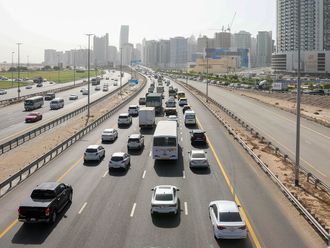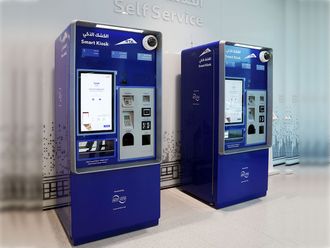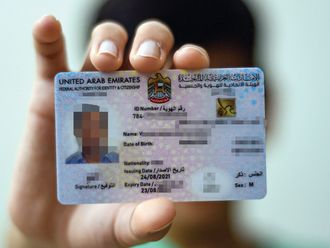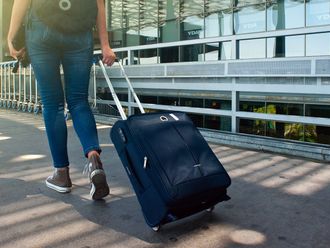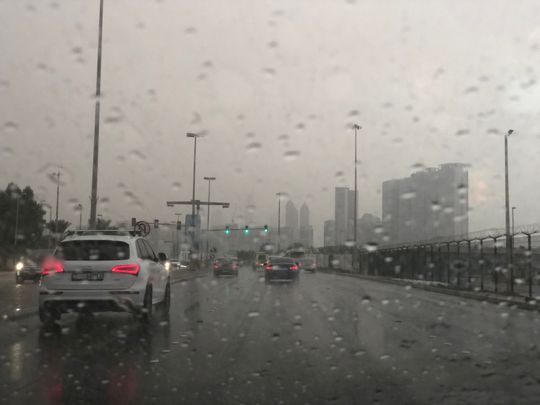
With the National Centre of Meteorology (NCM) predicting wet weather and overcast skies from Wednesday night to Thursday afternoon, you will need to adapt to the different driving conditions to stay safe.
Earlier this year, Dubai Police shared some basic guidelines that you need to follow when the visibility is reduced or driving becomes difficult for othe reasons. The authority called on drivers to take all precautionary measures, adhere strictly to traffic laws and regulations, reduce speed, maintain a sufficient, safe distance, avoid distractions, and not risk driving into valleys to photograph or chase rain.
When you are driving during rainy and windy weather conditions, slippery surfaces and reduced visibility can make driving conditions challenging. Here are essential tips for driving in the rain.
1. Check the traffic update before you start.
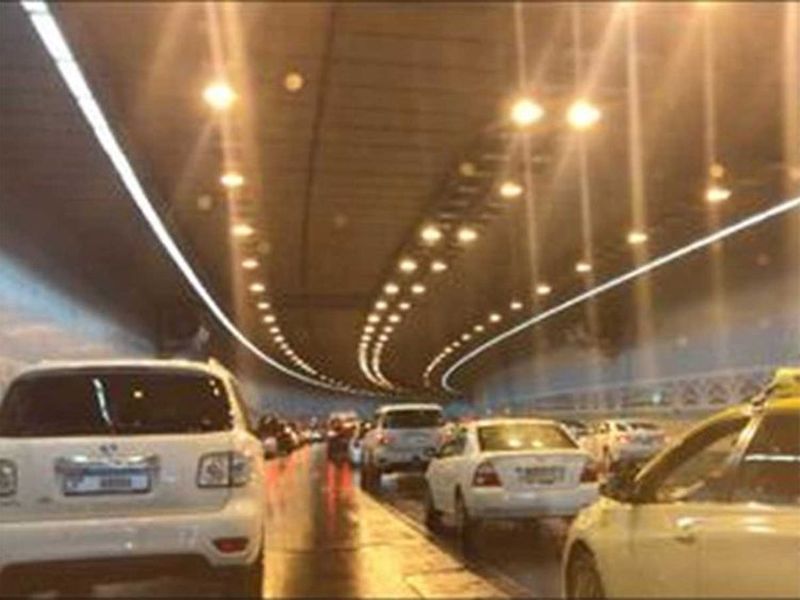
Traffic management authorities across the UAE announce any road closures and diversions that are implemented to deal with unstable weather conditions, and you can check the updates directly issued from the police or check the navigation app on your phone, to ensure that you are aware of how long it would take to reach your destination.
2. Check your wipers, lights and tyres.
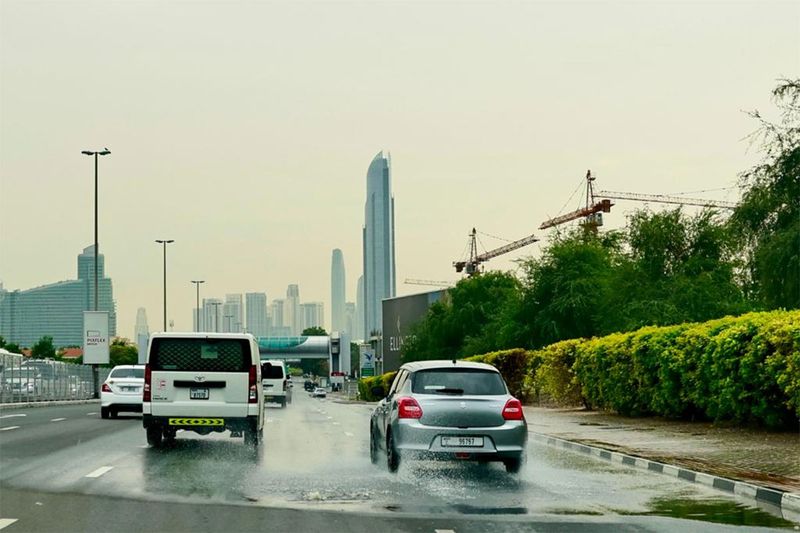
Wipers can suffer from damage and deterioration, especially during the hot summer months. Replace windshield wipers that leave streaks or don't fully clear the windshield with each swipe and fill the washer reservoir bottle with a washer solvent.
While getting in your car, it is also recommended to do a quick check of your brakes, hazard lights, indicator and fog lights, to make sure you do not face any trouble while on the road.
Another important factor in driving safely is making sure your tyres are in a good condition. Your tyre tread grooves are critical to your safety on the road. In wet weather, they help to remove water from the contact patch between your tyres and the road surface, meaning your car can brake, steer and accelerate properly. If the tyres’ treads are worn out, coming to a stop will be harder because of ‘aquaplaning’ or ‘hydroplaning’.
This is why it is recommended to do a thorough check of your vehicle before you start your journey in the rain.
3. Slow down
There are various reasons why driving slower than usual is advisable during the rain. Not only is it necessary to slow down when visibility is poor, it is also helpful in reducing your speed further if you suddenly a flooded patch of the road.
By driving with speed on a waterlogged road, your car can splash water unnecessarily, and enter your car’s air filter. The air filter is essentially the way through which the engine breathes, and the moment the filter is exposed to water, it can send in water to the engine, instead of air, ultimately leading to a breakdown.
Splashing water while driving is also a road hazard, as it blocks the visibility for other motorists.
It is also important to increase the safe distance that you maintain from the car ahead of you, as wet roads can make it harder to brake to a stop. If you notice a flooded section of the road coming up, momentarily use your hazard lights to warn the drivers behind you so that they, too, can reduce speed.
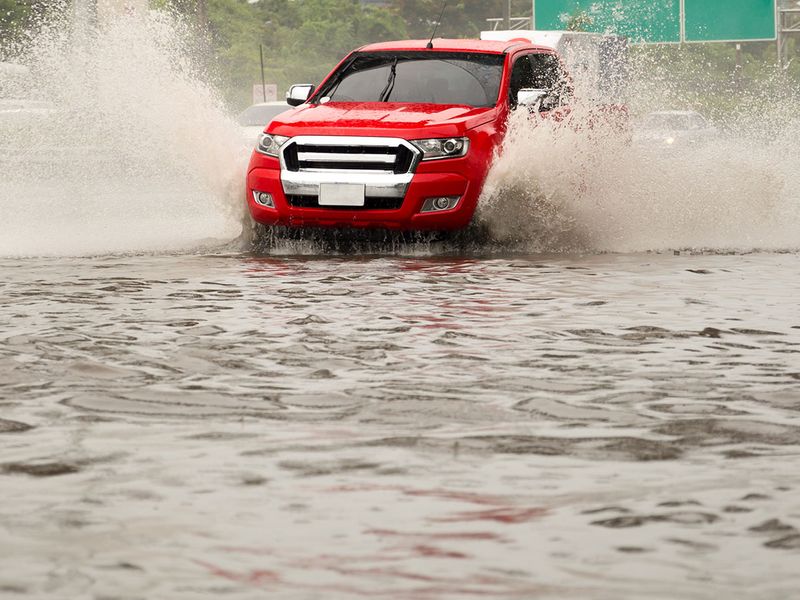
4. In extreme conditions, pull over.
If the rain is too heavy and is affecting visibility, slow down gradually and find a safe spot to pull over. It is safer to stop at a petrol station or service road, instead on the side of highways.
5. Don’t drive with your hazard lights on!
A dangerous practice observed on UAE roads is motorists driving with their hazard lights on. Firstly, hazard lights should only be used to indicate that you have stopped abruptly due to a road hazard ahead. Secondly, with your hazard lights constantly on, it would be impossible to indicate if you do need to change lanes. Police authorities have also announced a fine of Dh500 and four black points if you are found driving with your hazard lights on.
6. Avoid changing lanes.
Don’t change lanes unless you have to – constantly changing lanes is potentially dangerous as it could cause an accident. Remember that motorists behind you may not have seen you. Abu Dhabi Police also issued guidelines to motorists earlier this year, asking motorists to avoid overtaking.
7. Avoid driving to the mountains.
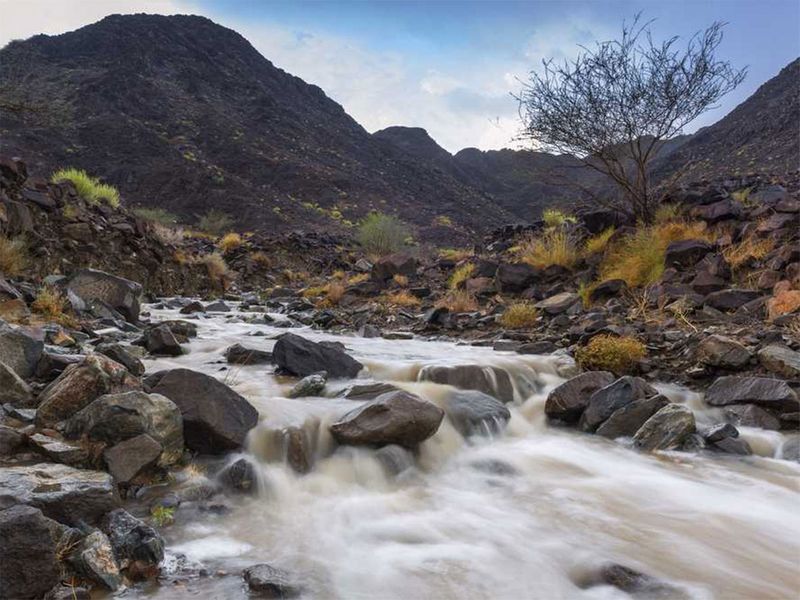
During extreme weather conditions, the National Emergency, Crisis and Disaster Management Authority (NCEMA) announces special instructions, advising motorists to avoid going to mountainous areas and the desert to ensure safety.
8. Check the water level.
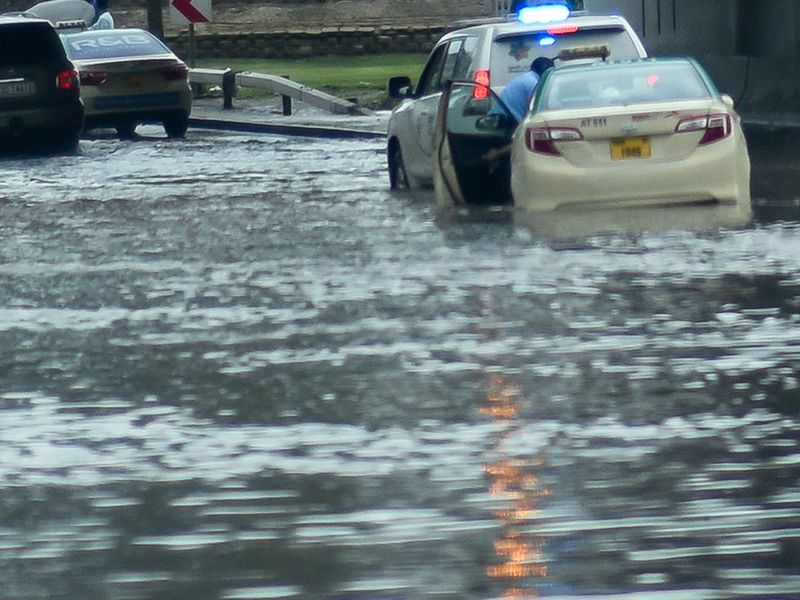
When you are about to cross a patch which is waterlogged, examine the water level carefully. If the water is up to the bumper, you can safely drive through, as long as you do so at a slow speed.
The easiest way to determine that you are not driving too fast is to look at how much water your car is disturbing. If your car is splashing water on the sides, you are driving too fast.
If the water level could reach the top of your bonnet, it is best to simply find an alternative route or wait.
What should I do if my car breaks down?
Speaking to Gulf News, an auto expert who has worked in the industry for over 15 years, said: “Never re-start the engine. All you will do is send more water into the engine. If the car breaks down, it is best to just leave it be. Leave the car and return when the water has subsided.”
You can then call a roadside recovery agency or speak to your insurance provider if you have paid for emergency recovery services.
9. Park carefully.
As you choose a spot to park your car, try to choose an area which is slightly elevated, with a lesser chance of water collecting around your car. On a single stretch of road, there can be parts of the road that get flooded while others stay relatively accessible. When it rains, it is advisable to check on your car at regular intervals, whether you are at home or at work. You will be surprised at how quickly your car can get surrounded by water.
This story was first published on November 7, 2021 and has been updated since.


